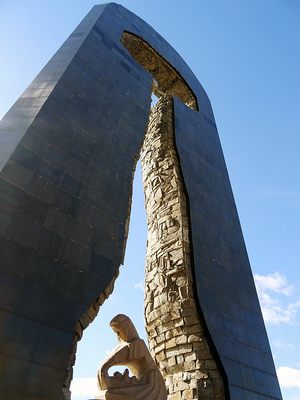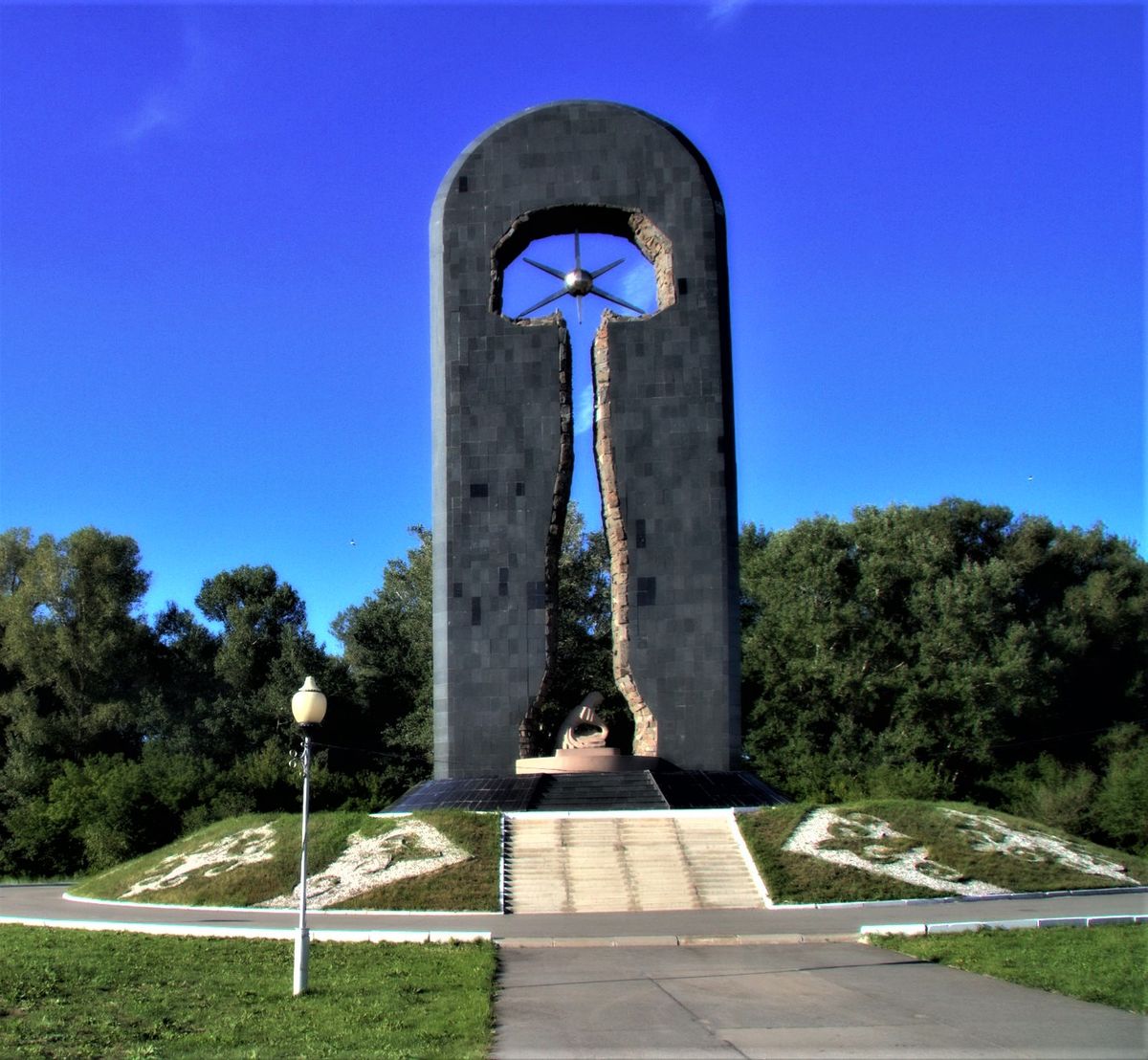About
Designed by Shota Valikhanov and erected on an island in the Irtysh River 2002, the “Stronger than Death” monument recalls Kazakhstan’s history as the fourth largest nuclear power by capacity and its leaders’ astonishing willingness to eventually give up that massive power.
From 1949 to 1989, nearly 500 nuclear tests were conducted at the Semey site known as “The Polygon,” but following independence in 1991, the first President of Kazakhstan, Nursultan Nazarbayev, decided to end the nation’s nuclear programs by signing the START I treaty. Unfortunately, the fallout from such extensive testing continues to this day as attested by this giant monument.
The terror of the monument’s mushroom cloud silhouette is punctuated by the marble centerpiece of a mother protecting her child while overhead, a giant atomic model hangs like a sword of Damocles. The true number of nuclear testing victims can never be known since elevated radiation has been recorded throughout Kazakhstan and its neighbors, but at least one million people in the Semipalatinsk region have been affected.
The tragedy of Kazakhstan’s nuclear history is perhaps mitigated somewhat by its advocacy for nuclear disarmament. The first major anti-testing campaign, known as Nevada Semipalatinsk, was popularly organized in 1989 and led directly to the shutdown on the Polygon.
Nazarbayev followed this with the establishment of the ATOM project ("Abolish Testing Our Mission”) in 2012, which organized an international coalition to combat nuclear proliferation. Today, the honorary ambassador for this program is Karipbek Kuyukov, an award-winning Kazakh painter born without arms as a result of exposure to radiation from the Semey site.
Related Tags
Central Asia Road Trip: Backroads & Bazaars
A 2-Week, 4-Country Odyssey.
Book NowCommunity Contributors
Added By
Published
March 10, 2021





















